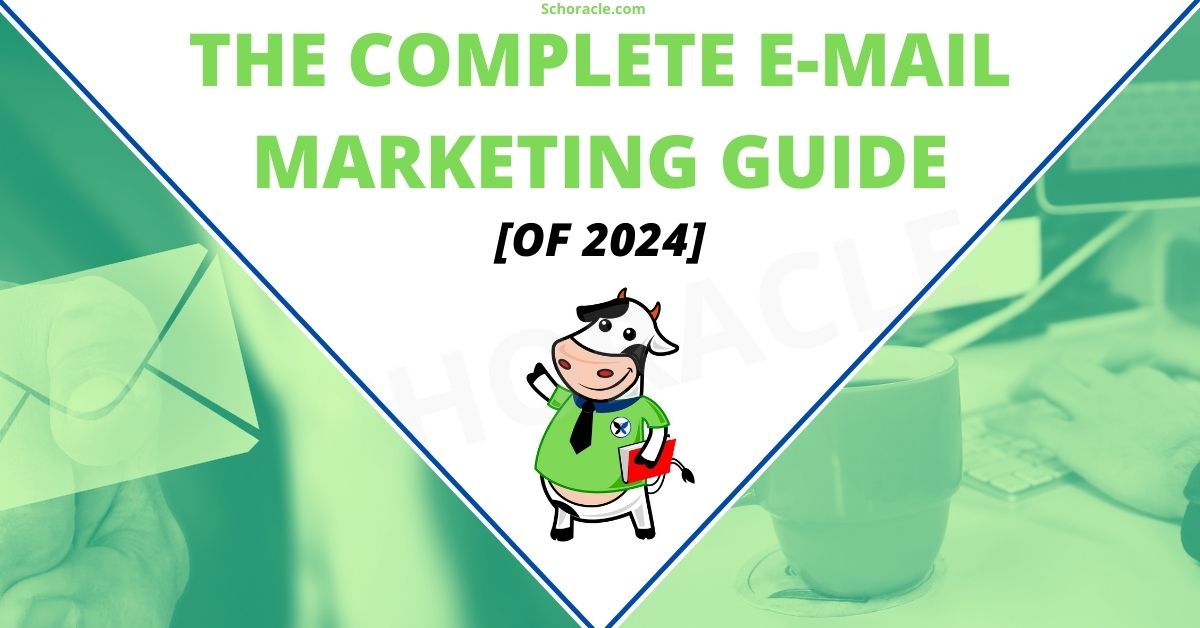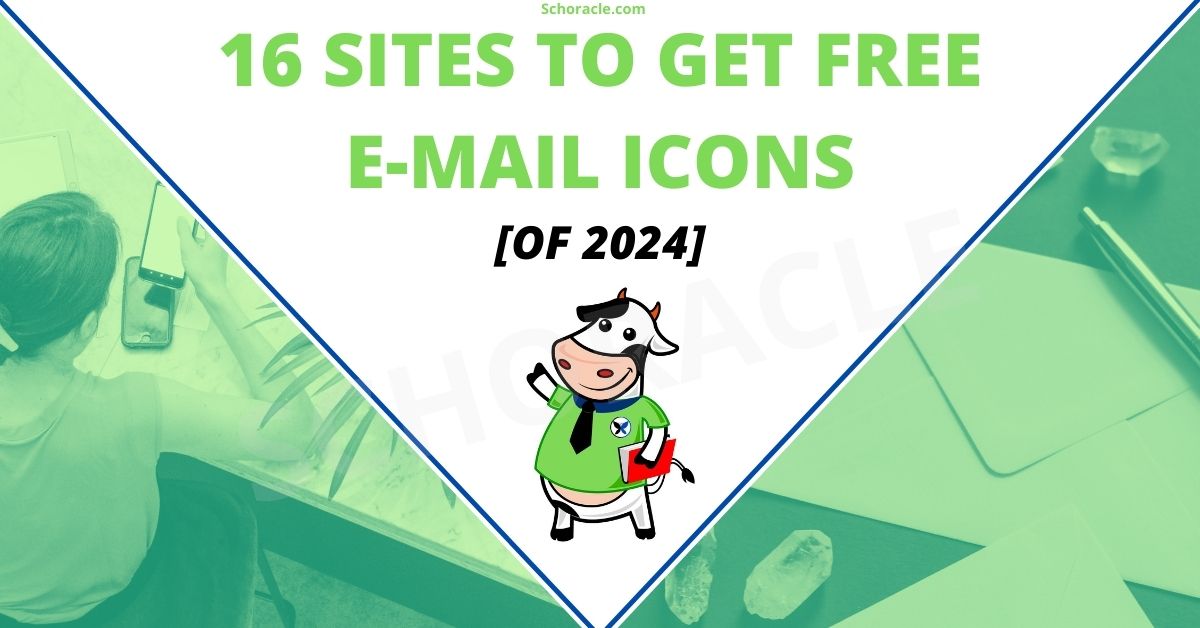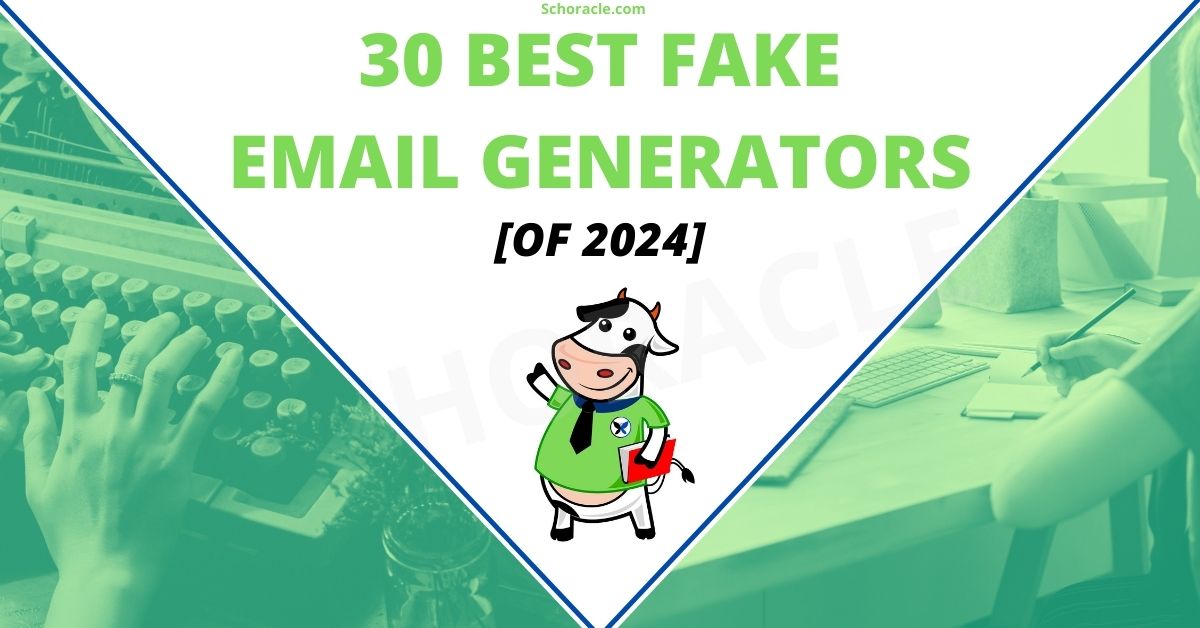Email marketing isn’t new. It’s among the oldest means of digital correspondence.
What makes it special compared to the newer forms of marketing?
For one, it provides an average Return on Investment (ROI) of $38 per dollar.
That’s 38 times the returns on your investment. Making it the single largest marketing channel for sales and brand growth.
Email marketing is special because you have a direct connection with your audience. A personal touch.
Something no other channel offers.
If you aren’t running email campaigns, you’re missing out on a world of growth opportunities.
Luckily, we won’t let you miss out.
In this email marketing guide, we cover
- The basics of email marketing
- How to get started with email marketing
- How to build your email list effectively
- The best email marketing tools in 2021 (free and premium)
And much more.
Email Marketing – Overview
If you’ve ever sent an email, you’d know that an email adds a personal connection.
Whether it’s inquiring about a brand’s product or clearing a doubt, emails are simple to send.
Every brand usually has an email to get in touch with. To ensure quality customer support and to convert unhappy customers into happy ones.
But let’s say, a brand wanted to get in touch with you. To advertise the latest offer or product. They wouldn’t individually send emails to their customers.
That takes time. Lots of time!
Instead, they use email campaigns. Email campaigns are a digital marketing strategy that uses an email list to target customers with an offer.
A customer can subscribe to an email list in several ways such as –
- Receiving a free product (discount coupon, eBook, printable)
- Installing a mobile app
- Filling a contact form
- Registering to a workshop or seminar
- Downloading a program
- Providing email to receive results from a quiz or test
- Surveys
Companies use clever means to obtain emails from their customers. While many people offer their email gladly to subscribe for valuable content, others get tricked into sharing their email.
Email marketing works only if you are transparent with your subscribers. It’s good practice to let your customers know they are subscribing to your list.
Likewise, every email must have an unsubscribe option at the bottom. To allow your readers to easily opt-out of your mailing list.
When these rules are not followed, the email regulations come into play. The emails that don’t follow the code of conduct are instantly marked as Spam.
This is the dark side of email marketing that you must avoid by all means.
Later, we’ll discuss the dos and donts of email marketing to ensure your email campaigns never end up in Spam.
Get Started with Email Marketing: 5 Things to Do First
With a high ROI, investing in email marketing is a must for every business. Email marketing can be daunting to master but it’s easy to start. Here is a quick start guide to get you rolling.
1. Choose an Email Marketing Service Provider
Before collecting your email list, it’s vital to choose your email marketing service provider. This is where your subscribers’ details are stored and campaigns are sent.
Having a user-friendly email service provider is critical to success. A good email service provider must display a useful list of analytics such as –
- Subscriber Count
- Recent Unsubscribers
- Click/Open ratio of Email Campaigns
- Industry Comparison and Average Response Rates
All these metrics help us understand how well our subscribers are interested in our campaigns. Getting detailed email insights is critical to email marketing success
Here is a list of the best email marketing service providers that offer free and premium plans.
At Schoracle, we use MailChimp and we recommend using it for your first 2,000 subscribers as it’s completely free. While the others offer unique perks as well, MailChimp has a user-friendly interface and a drag and drop builder. All of which are great to get started.
2. Build your Email List the Right Way
Now we come to the exciting stage – getting subscribers for your email list.
The most important rule to remember when gathering contacts for your list is to build relationships. Your subscribers are only interested in the content and your products. Nothing more.
When collecting emails, it’s essential to have an opt-in or double opt-in feature. Your customers must be fully aware they are registering to your list.
Signing up people without their intention is misleading and has consequences.
Eventually, people will mark your emails as spam. When your email is flagged often, your domain is immediately put on a blacklist for all future campaigns.
Avoid intentionally misleading your readers and stick to providing them with good content and valuable offers.
While it’s easy to purchase an email list from someone, the email owners didn’t volunteer to get emails from you. You’ll be doing more damage than good purchasing an email list.
We have a section below dedicated to growing your email list.
3. Create a Welcome Email
A welcome email is a message that is sent to your new subscriber when he or she signs up to your list.
Welcome emails have a high open-rate and hence, must contain valuable resources relating to your product, service, or website.
Here are 8 tips to design an effective welcome mail –
- Ensure your welcome emails are sent out on the same day or instantly after the subscriber signs up for effective open rates
- Use terms such as “Welcome” “Hello” “Greetings” in your subject line to welcome your new subscriber
- Always ask for the subscribers’ name in the contact form, this lets you use it in the subject line for a personalized greeting
- Tell your subscribers what action they should take with your welcome mail or how to use your product or service
- Offer a gift to your subscribers will create instant loyalty
- Navigate your subscribers to follow you on other social network channels in your welcome mail
- Throw a referral bonus to get your followers to refer your website or service to their network
- Keep it nice and short, to show them of the good things in days to come, use few but important links
4. Write Exceptional Subject Lines
The subject line of your email campaign is a critical aspect of success. Regardless of how good your content or offers are, if your subscriber sees a poor subject line, they’ll send your email straight to trash.
Eye-catching subject lines increase open rates. When your subscribers open more emails, they take action by clicking through.
Here are 6 tips with examples to create attractive subject lines –
- Use a personalized subject line (E.g. – “Mark, you won’t believe this unbelievable writing trick!”)
- Always make your subscribers curious (E.g. – “Alice, this new marketing video is going viral!”)
- Questions are excellent subject lines (E.g. – Tom, are you interested in upgrading your skills?)
- Keep the subject lines short (between 6 to 10 words work best)
- Deadlines work well but don’t overuse them (E.g. – Tina, 6 days left for your free trial offer)
- Clever use of humor in your subject lines (E.g. – Howard, why did the egg roll over the road…?)
Many email service providers let you use personalized subject lines by inserting the names. That’s why it’s important to collect the names of your contacts.
5. Time your Email Campaigns
It’s never nice when you receive a knock on your door or a call at midnight. Frankly, it’s annoying.
Imagine sending an email campaign at half-past midnight. Your subscribers are bound to hit the dreaded ‘Unsubscribe’ button.
While it’s easy to time your emails when an audience is in a particular time zone. This becomes increasingly difficult when you’ve got them spread across different countries.
After all, when it’s night in one part of the world. It’s daytime in the other.
Hence, it’s necessary to group your audience based on time zone. Email service providers let you segment your email lists using tags and lists.
By allotting your audience to their preferred time. Ensure everyone receives your email campaigns at the same hour without privacy invasion.
Schedule your emails during the day or evening for best results. It may take a bit of testing to understand the best times related to your audience.
Generally, high open/click rates are a good indicator to find your best times.
How to Build an Effective Email List from Nothing
Now that you understand the Dos and Don’ts of the email marketing world. It’s time to initiate you on the best practices of building your email list.
Especially, when you’ve got no subscribers at all.
Building an email list from the ground up seems impossible.
Luckily, with these handy tricks, you’ll have your first 100 subscribers in no time.
1. Analyze your Audience
If you don’t have any idea who likes your product or content. There’s bad news for you. You’ll never build a killer email list.
Knowing your audience is key to success when building an email list.
Let’s take an example – For instance, let’s say you owned an orange store. Naturally, you sell oranges to your customers.
Approaching every person that walks by your store and asking them to buy your product is a rough way to make sales. You’re sure to get some rude glances your way.
After all, not everyone on earth loves oranges. It’s a free world and people are free to choose their product.
That’s exactly how an email list works. Sending an email to everyone ends in a disaster. Because not everyone is interested in your product.
Every email campaign you send will have atrocious open and click rates.
Leaving you to wonder – why your email campaigns are performing poorly?
Research your audience to get an idea of who is more likely to respond to your product. And go after them.
2. A Website is ALMOST mandatory
Sure you can build an email list without a website. But it’s painfully slow. And not to mention, harder to convince your subscribers to trust you.
The other option for those that hate owning a website is to create landing pages.
Landing pages are a one-page website with an email opt-in.
They are specifically built to lure your customers in and sign up for a deal or offer.
The top landing page service providers are as follows –
- Wix
- Leadpages
- Hubspot
- Unbounce
- iContact
3. Attract Subscribers with Something Juicy
Never promise your audience more than what you can offer. You’ll cause them to doubt your authenticity and in time, exit from your list.
Instead, reward them.
Popular ways of getting people to join your email camp are –
- Offering a freebie in exchange for their email (E.g. eBook, trial offer, PDF, printable, exclusive access, get-started guide, etc.)
- Signing up to a workshop or seminar
- Free audit or consultation
- Quiz results in exchange for their email
Anything that offers real value is a great way to gain the trust of your new subscriber.
If your subscriber feels they are gaining knowledge by staying subscribed, you’ve got a loyal follower for life.
4. Pay for your Subscribers
Organic traffic is a great way to build a list. But it’s also slow, especially when you’re starting.
Ads are a powerful way to redirect traffic to your email opt-in form.
And while you’re thinking – But it all costs money, right?
A few peanuts in the jar compared to what you can accomplish in the long run with an email list.
Here’s a quick example to give you a general overview –
Let’s say you spend $5 on a daily ad budget. That’s $150 per month.
Every day you gain an average of 10 new subscribers. In a month, that’s 300 subscribers.
300 subscribers for $150, isn’t bad.
Now if you had a product to sell or an affiliate product that paid $50. You require 3 sales to break even at $150.
With 3 out of 300 subscribers, that’s a 1% conversion rate.
The average conversion rate is between 2-4% in the email marketing industry.
Even with below-average conversions, you’re still on par for breaking even with your ad spend.
What’s better? This email list is permanent. Unless someone subscribes. Over time, you’ll continue improving your sales conversion.
And that’s how the wheel of email marketing spins.
Popular ad networks include –
- Quora
Understanding Email Marketing Analytics
Every email campaign has a performance report.
Depending on your email service provider and your settings, these reports are displayed on your dashboard.
These metrics tell us a story on how your last email campaign performed. Some of these are –
Open Rate
Every time a subscriber opens your email, your open rate increases.
Let’s say if 100 people receive your email campaign. And 10 people open it. That’s a 10% open rate.
The average open rate varies between industries. However, a good open rate should be between 10-15%.
Click Rate
After opening your email, if a subscriber clicks your link, this counts as a click rate.
If out of 100 people, 10 people open your email, and 5 people click a link. Your click rate is 5%.
Generally, anywhere from 1-3% click rates are good ratios across industries.
Click-Through Rate
The percentage of subscribers who’ve clicked through your email after opening them.
Click-through rates come in two types. Total click-through rates (TCTR) and Unique click-through rates (UCTR).
TCTR occurs when a single person clicks your link multiple times. Or they repeatedly click your links over time.
UCTR measures unique clicks only. Every individual is treated as one-click despite multiple clicks.
Bounce Rate
Bounce rates are the number of subscribers that did not receive your email campaign or welcome mail.
This happens for a variety of reasons such as wrong email addresses or a full inbox.
Bounce rates come in two forms – soft bounce and hard bounce.
Soft bounces happen temporarily. When a subscriber’s email service is down, the inbox is full, or your email was too large for them to receive.
In short, a soft bounce means their email is verified but couldn’t be delivered for the above reasons.
Hard bounces are permanent restrictions. These happen due to invalid email addresses, emails blocked by the recipient for being spam, or invalid domains.
Hard bounces affect your reputation, sending too many emails to unverified sources is a red flag.
Bounce rates are a critical metric to measure deliverability. This metric lets you know if your email is reaching your desired destination.
That is why seeking permission when building your email list is important to success.
Tags/Audience
Email service providers give you the option of placing your audience in groups. This type of segmentation allows you to send different groups of email campaigns to different people.
Let’s say you run a cooking website that hosts vegan recipes and meat recipes. To not offend the vegan group, you could make 2 different lists.
One list receives vegan products and the other receives meat. In this way, you can keep both audiences happy.
Tags are a quick way to segment your audience into many smaller groups.
Email Marketing FAQ
Is Email Marketing Great for New Brands?
Email marketing is a personal way of connecting with your customers.
When you build an email list, sending weekly alerts about your products is a great way to stay in touch.
If you’ve just started a business, reaching out to people via email has exceptional conversion rates.
But provided you’ve followed the best practices in this guide.
Share testimonials or portfolios of your past work to sell your services.
Show buyer reviews of your products to engage an audience.
Emails are an efficient way to send to a large group of people without taking too much time.
How Do I Ensure Customers Enjoy my Email Campaigns?
Email campaigns must follow best practices to ensure high clicks and deliverability.
Here are a few tips to keep in mind for your next campaigns –
- Use attractive high-quality images
- Short subject lines
- Get to the point quickly
- Include an ‘unsubscribe’ option
- Use a few external links (1 or 2 should do it)
- Use an email service provider to track user analytics
- Send emails always at the same time
- Maintain the same email routine every week
- Offer a discount if you sell products or services
Should I Buy an Email List?
Buying an email list would do you no good. First, it’s costly and second, everyone on that list is probably spammed to death.
If that email list is sold to you. Chances are that the email list is being sold to hundreds if not thousands of other people.
The conversion rate for an email list is terrible.
What’s worse, with many people marking your email as spam, your email will be flagged by the email providers.
In short, buying an email list is a strict no.
While building an email takes time. It’s worth it in the long run as you’ve invested in loyal customers.
Help! People are leaving, how do I decrease my unsubscribe ratio?
Email marketing comes a full circle. What we mean is with people subscribing to your interesting content. Others lose interest over time.
And guess what? They unsubscribe.
It’s completely natural to have people exit from your list. But it’s important to pay attention to the reason they are leaving.
Every time they unsubscribe, they’ll be prompted to provide a reason. Most email service providers offer this by default.
Learning why they left is key to stopping others from leaving your list.
Popular reasons why people unsubscribe are –
- Bored of your content
- Did not sign up for your list (only for the freebie you offered)
- Not enough content or discounts
- Too much content or promotions
- Offensive content
- Not interested
- Not enough time to check their emails
Conclusion
Now that you’ve learned how to start your email marketing campaigns, it’s time to put these best practices at work.
Remember, it takes months and even years before you see results from your campaigns. Building an email list isn’t easy, but once you do, it stays with you.
We hope our email marketing guide has been of use to you. Share your thoughts below.







